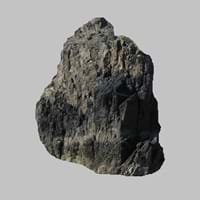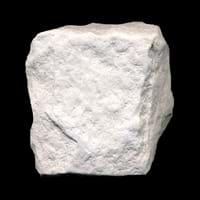Definition
Metapelite is an old and currently not widely used field geological term for a clay rich fine-grained clastic sediment or sedimentary rock, i.e. mud or a mudstone
Diatomite is a fine-grained sedimentary rock which is formed from consolidated diatomaceous earth
Discoverer
Unknown
Unknown
Etymology
From Pelos or clay in Greek
From diatom + -ite1
Class
Metamorphic Rocks
Sedimentary Rocks
Sub-Class
Durable Rock, Medium Hardness Rock
Durable Rock, Soft Rock
Group
Not Applicable
Not Applicable
Other Categories
Coarse Grained Rock, Fine Grained Rock, Medium Grained Rock, Opaque Rock
Fine Grained Rock, Opaque Rock
Texture
Foliated
Clastic or Non-Clastic
Color
Dark Greenish - Grey, Green, Light Green, Light Greenish Grey
Grey, White, Yellow
Durability
Durable
Non-Durable
Interior Uses
Decorative Aggregates, Interior Decoration
Decorative Aggregates, Homes, Interior Decoration
Exterior Uses
As Building Stone, As Facing Stone
Garden Decoration, Paving Stone
Other Architectural Uses
Curbing
Curbing
Construction Industry
Cement Manufacture, Construction Aggregate, for Road Aggregate
As Dimension Stone, Cement Manufacture, Construction Aggregate, for Road Aggregate, Landscaping, Making natural cement, Source of calcium
Medical Industry
Not Yet Used
Not Yet Used
Antiquity Uses
Artifacts
Artifacts
Commercial Uses
Commemorative Tablets, Creating Artwork
Alumina Refineries, Animal feed filler, As a Feed Additive for Livestock, Creating Artwork, Drawing on blackboards, Fire resistant, Gymnasts, athletes and mountain climbers use for grip, In aquifers, Soil Conditioner, To ignite fire, Used as a filter medium, Used as an insecticide, Whiting material in toothpaste, paint and paper
Types
Not Available
Not Available
Features
Easily splits into thin plates, It is One of the Oldest, Strongest and Hardest Rock
Clasts are smooth to touch, Is one of the oldest rock, Smooth to touch, Very fine grained rock
Archaeological Significance
Monuments
Not Yet Used
Not Yet Used
Famous Monuments
Not Applicable
Not Applicable
Sculpture
Not Yet Used
Not Yet Used
Famous Sculptures
Not Applicable
Not Applicable
Figurines
Not Yet Used
Not Yet Used
Formation
Due to change in environmental conditions, rocks are heated and pressurized deep inside the Earth's surface. Metapelite is formed from the extreme heat caused by magma or by the intense collisions and friction of tectonic plates.
Diatomite rock formed from the skeletal remains of single celled plants called diatoms. When diatoms die, their skeletal remains sink to the bottom of lakes and oceans etc. hence forming diatomite deposit.
Mineral Content
Albite, Chlorite, Quartz
Calcite, Clay, Clay Minerals, Quartz, Sand
Compound Content
Aluminium Oxide, CaO, MgO
Ca, NaCl, CaO
Types of Metamorphism
Not Applicable
Not Applicable
Types of Weathering
Biological Weathering, Chemical Weathering, Mechanical Weathering
Biological Weathering, Chemical Weathering, Mechanical Weathering
Types of Erosion
Chemical Erosion, Coastal Erosion, Water Erosion, Wind Erosion
Chemical Erosion, Coastal Erosion, Wind Erosion
Grain Size
Medium to Fine Coarse Grained
Very fine-grained
Fracture
Fibrous
Not Available
Porosity
Highly Porous
Highly Porous
Cleavage
Not Available
Non-Existent
Toughness
Not Available
1
Specific Gravity
3.4-3.7
2.3-2.4
Transparency
Opaque
Opaque
Density
0-300 g/cm3
2.49-2.51 g/cm3
Resistance
Heat Resistant, Impact Resistant, Pressure Resistant
Heat Resistant
Deposits in Eastern Continents
Asia
Not Yet Found
Brunei, India, Indonesia, Malaysia, Singapore, Thailand, Vietnam
Africa
Western Africa
Cameroon, Chad, Ghana, Kenya, Malawi, Sudan, Tanzania, Togo, Zambia, Zimbabwe
Europe
United Kingdom
England, France, Germany, Spain, United Kingdom
Others
Not Yet Found
Not Yet Found
Deposits in Western Continents
North America
Not Available
Canada, USA
South America
Brazil, Colombia, Ecuador
Colombia
Deposits in Oceania Continent
Australia
Central Australia, Western Australia
Adelaide, New Zealand, Queensland, Tonga, Victoria, Yorke Peninsula
Metapelite vs Diatomite Characteristics
Though some rocks look identical, they have certain characteristics which distinguish them from others. Characteristics of rocks include texture, appearance, color, fracture, streak, hardness etc. Metapelite vs Diatomite characteristics assist us to distinguish and recognize rocks. Also you can check about Properties of Metapelite and Properties of Diatomite. Learn more about Metapelite vs Diatomite in the next section. The interior uses of Metapelite include Decorative aggregates and Interior decoration whereas the interior uses of Diatomite include Decorative aggregates, Homes and Interior decoration. Due to some exceptional properties of Metapelite and Diatomite, they have various applications in construction industry. The uses of Metapelite in construction industry include Cement manufacture, Construction aggregate, For road aggregate and that of Diatomite include As dimension stone, Cement manufacture, Construction aggregate, For road aggregate, Landscaping, Making natural cement, Source of calcium.
More about Metapelite and Diatomite
Here you can know more about Metapelite and Diatomite. The life cycle of a rock consists of formation of rock, composition of rock and transformation of rock. The composition of Metapelite and Diatomite consists of mineral content and compound content. The mineral content of Metapelite includes Albite, Chlorite, Quartz and mineral content of Diatomite includes Calcite, Clay, Clay Minerals, Quartz, Sand. You can also check out the list of all Metamorphic Rocks. When we have to compare Metapelite vs Diatomite, the texture, color and appearance plays an important role in determining the type of rock. Metapelite is available in dark greenish - grey, green, light green, light greenish grey colors whereas, Diatomite is available in grey, white, yellow colors. Appearance of Metapelite is Banded and that of Diatomite is Soft. Properties of rock is another aspect for Metapelite vs Diatomite. The hardness of Metapelite is 5-6 and that of Diatomite is 1. The types of Metapelite are Not Available whereas types of Diatomite are Not Available. Streak of rock is the color of powder produced when it is dragged across an unweathered surface. The streak of Metapelite is unknown while that of Diatomite is white. The specific heat capacity of Metapelite is 0.72 kJ/Kg K and that of Diatomite is 0.90 kJ/Kg K. Depending on the properties like hardness, toughness, specific heat capacity, porosity etc., rocks are resistant to heat, wear, impact, etc.Metapelite is heat resistant, impact resistant, pressure resistant whereas Diatomite is heat resistant.





